- From reviews to real-time: the shift reshaping performance
- 5 core pillars of continuous performance management
- What leading companies are doing differently
- 4 common pitfalls when evolving your performance culture
- How to begin building a continuous performance culture
- The future of performance is always on
Continuous performance management is more than just the traditional model of performance reviews.
It’s a fundamentally different performance management model rooted in agility, trust, and transparency. At its core, this approach prioritizes timely feedback, dynamic goal setting, and growth-centered leadership. It empowers managers and employees to engage in meaningful performance discussions that strengthen alignment and accelerate results.
By emphasizing continuous performance development and reinforcing accountability at every level, organizations can build a more responsive and resilient culture. The benefits of continuous performance extend beyond individual productivity. Teams stay more connected to business goals, managers can coach in the moment, and high performance becomes a shared, sustained practice across the organization.
From reviews to real-time: the shift reshaping performance
Performance management isn’t inherently static, but many traditional processes haven’t kept pace with how work actually happens today. Relying on backward-looking reviews and infrequent check-ins is no longer sufficient. Employees expect clarity, consistency, and opportunities to expand their abilities in real time.
“Performance management can be a much more critical tool to an organization when it’s used to better enable and grow their employees,” Caitlin Collins, program strategy director at Betterworks, shares.
Continuous performance management involves a shift from a backward-looking review cycle to a future-focused, real-time enablement model.
AI in performance management is helping organizations make that transition. In the 2025 State of Performance Enablement report, 89% of employees whose performance process includes AI say they’re highly satisfied, more than double the satisfaction rate of those without AI support.
As priorities evolve and roles shift, a continuous performance management process gives teams a framework to stay aligned and adaptive. It centers performance conversations in the present, empowers managers to coach in the moment, and gives employees the clarity they need to succeed.
5 core pillars of continuous performance management
As continuous feedback at work becomes the norm, organizations are rethinking how to embed performance conversations into everyday workflows.
A continuous performance management process is not one-size-fits-all, but the most effective systems share a few core principles that support high performance, adaptability, and employee development.
Feedback in the flow of work
To support continuous performance development, employees need timely feedback that they can act on immediately. That means moving away from retrospective critiques and toward real-time feedback and coaching that happens in the context of day-to-day work.
When managers provide feedback in the moment, employees are better equipped to adjust priorities, remove roadblocks, and continuously improve.
“Good 1:1s aren’t just about talking for the sake of doing so; they should move work forward,” says Bruce Walcroft, principal solutions engineer at Betterworks.
Goals that evolve with the business
In a dynamic environment, goal setting can’t be static. Annual goals often become outdated before in a quarter. A more effective performance management process focuses on flexible, short-term goals that stay aligned with shifting business priorities. In an ongoing performance management approach, teams update goals regularly and ensure alignment from individual contributors to leadership, reinforcing the connection between daily work and strategic outcomes.
Growth-centered leadership
Today’s performance management system must enable managers to act as coaches, not just evaluators. That means prioritizing continuous improvement, career development, and consistent performance discussions. When employees feel supported by growth-centered leadership, they’re more likely to stay engaged, seek feedback, and take ownership of their development. It also strengthens the employee and manager relationship, creating a foundation of trust and accountability. As the Betterworks 2023 State of Performance Enablement report clearly shows, when performance management is seen as a success, employee trust in managers doubles to nearly 80%.
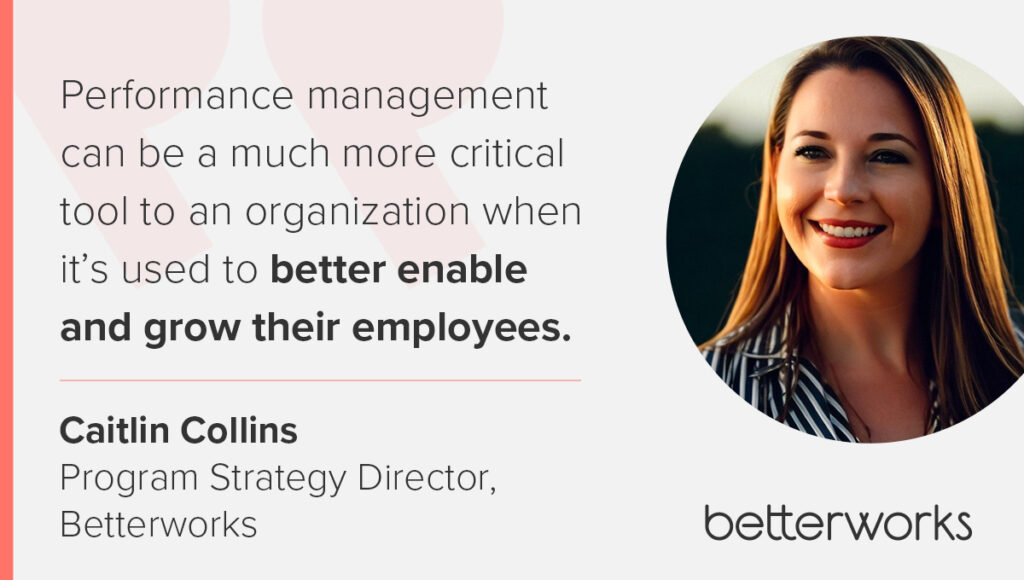
Data-driven visibility without bureaucracy
Visibility shouldn’t come at the expense of flexibility. Modern organizations need real-time insights into progress and performance without bogging teams down in processes. A strong performance management system helps leaders track goals, identify patterns, and address challenges early without requiring extra administrative burden. By bringing together feedback, check-in history, and goal status in one place, organizations enable faster, smarter decision-making.
A culture of trust and accountability
Continuous feedback at work helps reinforce a company culture where expectations are clear and performance is a shared responsibility. When performance discussions and coaching are part of regular conversations — not just reserved for annual reviews — employees feel more supported, more empowered, and more accountable. This ongoing approach helps the manager and employee build honest, high-impact relationships that strengthen team alignment and drive outcomes.
A successful ongoing performance management system relies on shared accountability. That doesn’t come from reminders alone. It comes from leaders modeling the behaviors they expect and teams understanding how performance connects to broader business goals. Embed regular check-ins, real-time feedback, and goal tracking into your rhythm of business. Celebrate progress, not just completion.
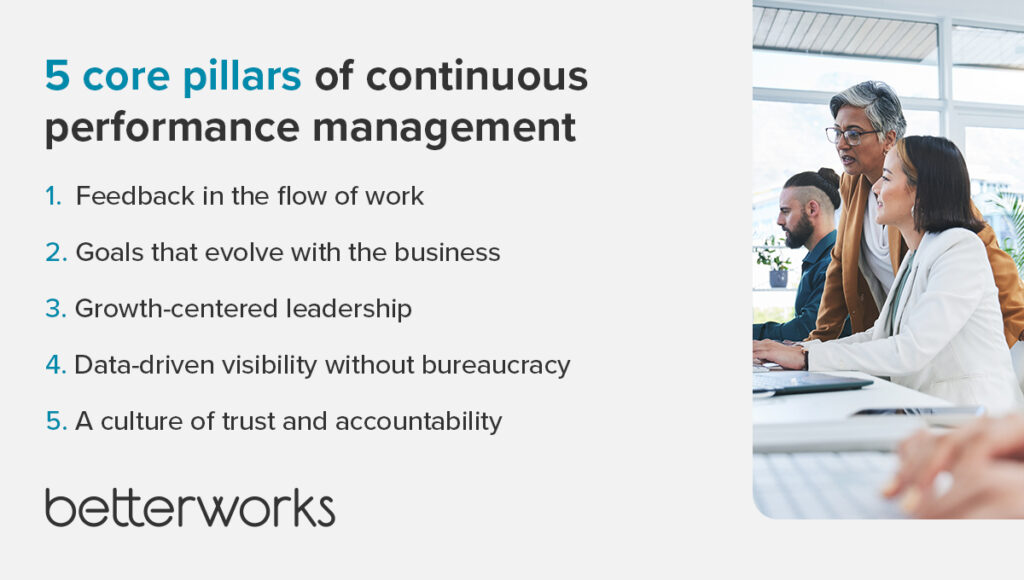
What leading companies are doing differently
The shift to continuous performance management looks different in every organization, but successful programs tend to share a few key traits: values alignment, consistent goal-setting, structured conversations, and a strong connection to business outcomes.
At Abarca Health, leaders knew that rapid growth could easily pull attention away from the company’s values. So instead of treating culture as a static artifact, they embedded it into their performance process. Goal-setting and feedback were tied explicitly to Abarca’s values, reinforcing both individual accountability and team cohesion. This made it easier to scale without losing what made their culture work in the first place.
LivePerson was looking to revamp an outdated performance management system when it adopted continuous performance management. The company moved away from traditional reviews and leaned into regular, high-impact conversations and feedback between managers and employees. These conversations weren’t just about reflection. They became moments for alignment, expectation setting, and real-time course correction. For HR leaders, this also unlocked visibility into performance health across the business and provided a wealth of data to improve talent development.
Both companies used continuous performance management to solve for different needs. But the common thread was structure with flexibility: shared frameworks, consistent coaching, and a system that made feedback useful in the moment. That’s what turns performance management into performance enablement.
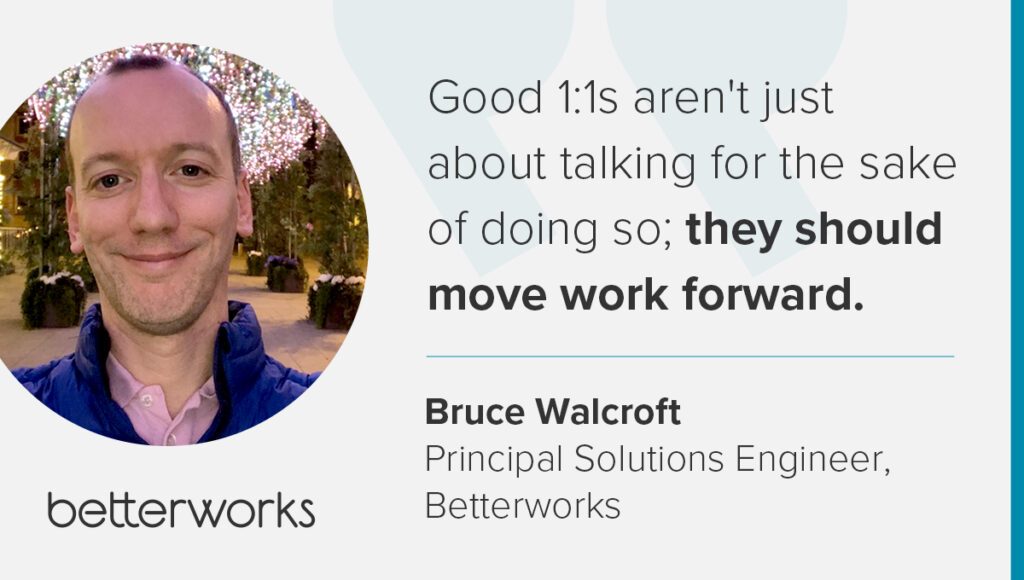
4 common pitfalls when evolving your performance culture
Even with the right tools, organizations can fall short if they overlook key dynamics in the shift to continuous performance management. These missteps often stem from legacy mindsets, underdeveloped leadership capabilities, or a lack of clarity around roles and expectations.
Clinging to annual review mindsets
For many teams, the move to continuous performance management starts and stops with a change in frequency, but not necessarily in approach. Simply increasing the number of check-ins isn’t enough. If managers still treat these moments like formal, backward-looking evaluations, they won’t deliver real value. High-performing organizations understand that performance discussions need to be timely, forward-looking, and growth-focused. Without this mindset shift, even the best systems will feel outdated.
Underestimating the manager skill gap
Managers are often expected to serve as coaches and facilitators of performance, but most haven’t been trained to do it well. In fact, 2 of 3 managers say they need more support in delivering performance management, according to the Betterworks 2024 State of Performance Enablement report. The skills required to lead ongoing performance discussions, deliver meaningful feedback and coaching, and support employee development are rarely built overnight. Organizations that succeed in evolving their approach to performance invest early and often in efforts to train managers to lead with confidence and empathy.
Treating check-ins as checklists
When check-ins become just another task to complete, they lose their impact. Continuous feedback at work must feel personal, relevant, and connected to business goals. Otherwise, it risks disengaging employees and reinforcing a compliance mindset. The most effective check-ins are guided by a clear structure but flexible enough to encourage real conversation. They focus on removing blockers, celebrating wins, and identifying areas for growth.
Lack of accountability or follow-through
Even with strong intent, a performance management process can fail if no one is tracking follow-through. Without clear expectations, regular monitoring, and cultural reinforcement, the system may fade into background noise. Visibility tools can help, but they’re no substitute for creating a culture where accountability is shared and performance is a daily conversation between employee and manager.
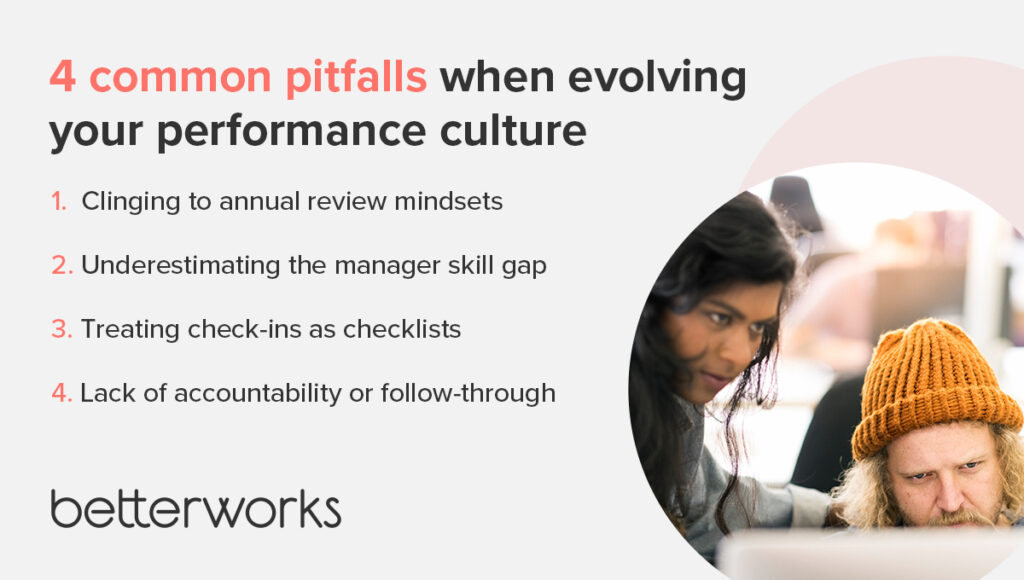
How to begin building a continuous performance culture
Shifting to a continuous performance approach doesn’t require a full transformation from day one. Many organizations begin by identifying and scaling what already works, then layering in systems, training, and accountability.
Step 1: Understand what’s already happening
In some organizations, continuous performance habits emerge on their own through manager 1:1s, project retrospectives, and informal goal setting. Before rolling out a new framework, assess where performance conversations are already taking place. What tools are teams using? How do employees perceive feedback and goal clarity? Surveys, interviews, and engagement data can reveal whether your current approach is enabling high performance or simply checking boxes.
Step 2: Involve employees and managers in the redesign
Performance management only works when the people using it find it valuable. That’s why leading organizations involve managers and employees early in the shift to a continuous performance management process. Ask: What do you wish performance discussions focused on? How can check-ins be more meaningful? Co-creating your performance model using design thinking fosters buy-in and builds alignment across levels.
Step 3: Provide structure and training — not scripts
The best performance management systems guide behavior without dictating it. That means offering templates for check-ins, goal-setting support, and tools for capturing performance conversations while also trusting managers to lead with empathy and context. To make this work, organizations must train managers in feedback and coaching skills. Not everyone is a natural coach, but everyone can improve with support.
Step 4: Invest in technology that drives visibility and action
Technology plays a critical role in enabling continuous improvement performance management. Purpose-built tools allow for real-time feedback, cross-functional goal alignment, and transparent performance tracking. When managers and employees have shared visibility into goals and progress, conversations become more productive, and HR leaders gain the insights needed to drive change.
Step 5: Reinforce accountability with culture, not compliance
A successful ongoing performance management system relies on shared accountability. That comes from leaders modeling the behaviors they expect and teams understanding how performance connects to broader business goals. Embed regular check-ins, real-time feedback, and goal tracking into your rhythm of business. Celebrate progress, not just completion. Recognition also plays a critical role as Charles Duhigg, New York Times bestselling author of The Power of Habit, noted in his keynote address for EmpowerHR 2025. “When we tell an employee, in addition to giving them a raise, that it’s in recognition of the fact of how much other people appreciate them, how much we rely on them, what a great job they’re doing, that they’re giving it that extra 10%,” he said, “what we’re doing is we’re giving them an emotional reward that’s even more powerful.”
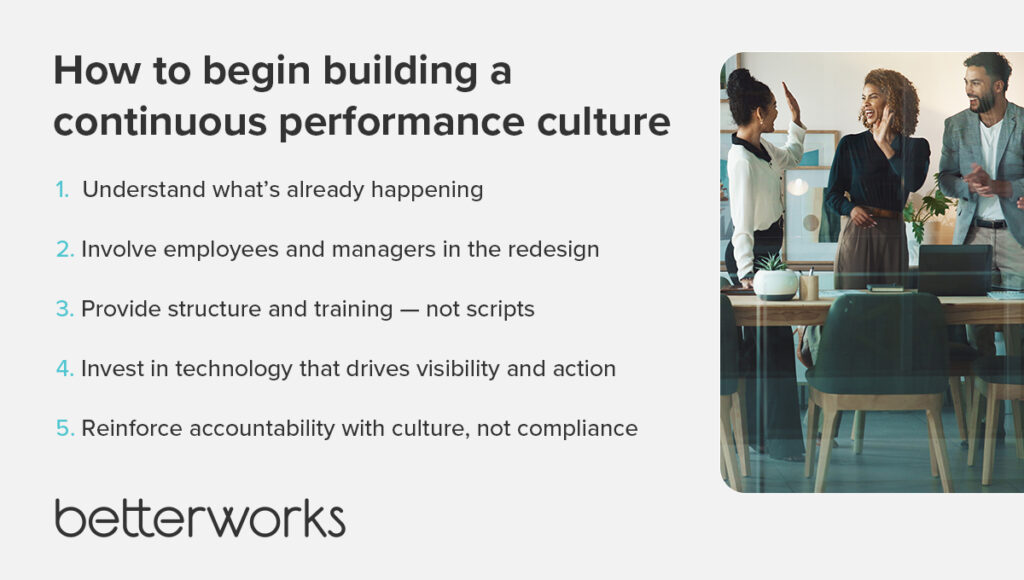
The future of performance is always on
The long-term success of continuous performance management depends on more than tools or timelines—it depends on culture. Specifically, it depends on whether performance expectations, conversations, and accountability are part of how people work together day in and day out. That’s the true aim of continuous performance management: not just to structure how performance is measured, but to shape how it’s lived.Want to transform your performance strategy into real, sustained impact? Download the 6 Keys to Better Performance Enablement to explore the essential practices high-performing organizations use to build alignment, accountability, and growth—every day.
What are the Keys to Performance Enablement?


